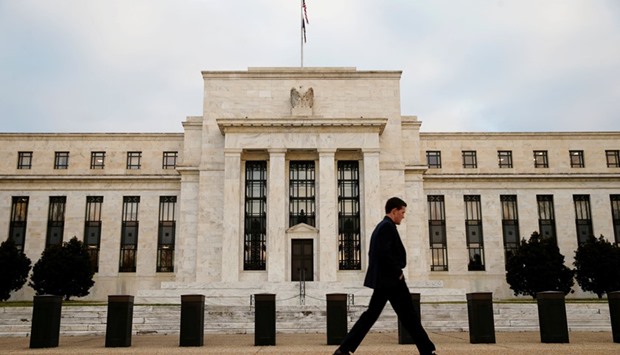It is a sign of the caution that permeates the global economic outlook when four of the world’s top central banks, all due to meet within days of each other, are almost unanimously expected to make no change to their extraordinary stimulus programmes.
While the US Federal Reserve, Bank of England, Swiss National Bank and the Bank of Japan are all dealing with varying amounts or shortages of inflation, none are expected to act ahead of one of the biggest risk events of 2016.
Britain’s referendum on whether to remain in or leave the European Union has been creeping from the back to the front of investors’ minds.
During the last full week of campaigning before the June 23 vote, it may dominate most discussion.
Janet Yellen’s Fed has spent most of the past month or so dropping hints that a summer rate hike was on the way.
However, disappointing May hiring data and a UK vote that is too close in the polls to have confidence in the outcome have toned down her message, making a rate rise on June 15 now highly unlikely.
That leaves financial markets stuck in a holding pattern with renewed fears about global growth pushing against safety nets that central banks have built up over the years, according to Valentin Marinov, head of G10 FX strategy at CA-CIB.
So a packed week of data releases for the world’s largest economy, including retail sales, housing starts, building permits as well as inflation, will at best be able to help build the case for a Fed rise as soon as July, rather than September.
“Weak labour market data have messed up the carefully-prepared script for the Fed’s next rate move.
An interest rate rise at the meeting next week is off the table,” wrote Christoph Balz, economist at Commerzbank, in a note.
“However...the US labour market recovery is not over yet and a rate hike at the meeting in July is therefore still on the agenda.”
A recent Reuters poll showed four-fifths of a sample of 90 economists expect a rate rise in either July or September, with most leaning toward the latter month, and with many saying a hiring rebound could seal an earlier move.
June jobs data won’t be released until early July.
But for the most part, the economy has been performing well: an analysis of key economic releases since the last Fed meeting shows 70% have come in at or above Reuters poll forecasts.
US retail sales may stage a milder 0.4% rise on the month after a 1.3% surge in April, while housing starts and permits will be watched closely after a blowout month in April for pending and new home sales.
Core consumer price inflation is likely to remain on a relatively steady course a few ticks above 2%.
In Britain, where not a soul expects the Bank of England to change policy just ahead of the EU referendum but instead focus on contingency planning and market liquidity in the event of a vote to leave, price pressures are weaker.
Headline inflation, which the BoE targets, is forecast to rise to 0.4%, with core inflation at 1.3%.
The UK jobless rate is forecast to hold steady at 5.1%, close to what many would call full employment.
But with a slowdown this year in the UK economy which a majority of analysts attribute to jitters ahead of the referendum, talk about interest rates has shifted from the next rate rise to whether they will need to be cut.
In Japan, the dearth of inflation is much more severe, much as it has been for the better part of two decades and there is little hope for a revival any time soon.
So while the Fed is forecast to take a pass in June and possibly lift its federal funds rate gingerly in July, the Bank of Japan is forecast to take a pass on June 16 and do the opposite in July by piling on more stimulus.
Much of it will depend on the yen exchange rate, which appears now to be out of the BoJ’s control, having surged earlier this year when it surprised the markets by introducing by a narrow majority a negative deposit rate policy.
In Zurich, the SNB is also expected to leave its negative key rate unchanged at a midpoint of -0.75%, according to a Reuters poll.
There may be some signs of inflation turning but again, what the Swiss Franc does will matter a lot and what drives it is not completely within the SNB’s control.

A man walks past the Federal Reserve Bank in Washington. While the Fed, Bank of England, Swiss National Bank and the Bank of Japan are all dealing with varying amounts or shortages of inflation, none are expected to act ahead of one of the biggest risk events of 2016.


